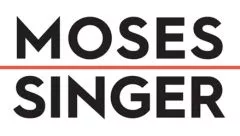The extent of the right to make "fair use" of another's copyrighted materials is the subject of two important new decisions, one from the U.S. Supreme Court and another from the Second Circuit Court of Appeals, issued within days of each other. Between them, these decisions mark notable developments in copyright law and will have significant impact on the computer software industry and the market for fine art in particular.
First, the Supreme Court's April 5, 2021 ruling overturns Oracle's wide-ranging judgment against Google for unauthorized use of Oracle's Java programming language. The Supreme Court assumed that copyright may protect certain commands in "Application Programming Interfaces" ("APIs") as "literary" works, but agreed with Google that the disputed uses of those commands were protected "fair uses" of that copyrighted material. The Supreme Court, which last ruled on the scope of "fair use" thirty years ago, seemed convinced that the interoperability of computer systems requires that such uses be legal, and was persuaded that Google's use was transformative and did not invade Oracle's legitimate copyright monopoly.
In contrast, in Andy Warhol Foundation v. Lynn Goldsmith Ltd., the Second Circuit Court of Appeals concluded that a series of artworks created by Andy Warhol using Lynn Goldsmith's celebrity photo portrait of Prince as "source material" were substantially similar to the Goldsmith photo and not a transformative "fair use." The fact that Warhol's style recognizably infused the artworks did not compel the Court to conclude that Warhol's artworks were transformative, making them no more than recognizable copies of the photographs, and leaving purchasers of high-priced but legally unauthorized screen prints and other versions of Warhol's artworks in an unusual legal limbo.
The content of this article is intended to provide a general guide to the subject matter. Specialist advice should be sought about your specific circumstances.




